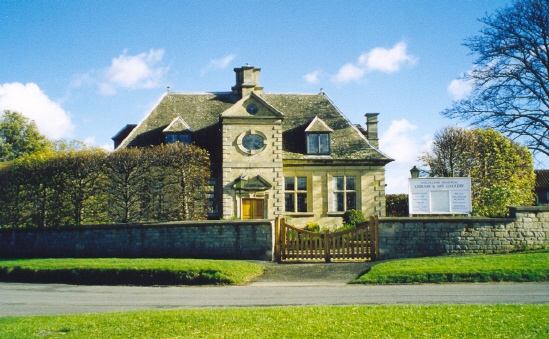|
The
Willoughby Memorial Library, CORBY GLEN The village of Corby Glen has had several schools in the past, the most illustrious being Read's Grammar School, a picturesque stone building founded in 1669 under the will of Charles Read, a Nottinghamshire merchant who bequeathed a yearly rent of £48 15s. 5½d. to pay for the instruction of village children in reading, writing, arithmetic and Latin. In 1880, Queen Victoria approved a scheme
for Read's Grammar School which provided for boarders and fixed the
headmaster's yearly salary at £25 plus a fee for each boy attending the
school. Boys were to be of "good character and sufficient health" and they
were taught the "principals of the Christian faith, reading, writing,
arithmetic, geography, history, English grammar, composition and
literature, mathematics, Latin, at least one foreign European language,
natural science, drawing, drill and vocal music". But the building is still in a fine state of repair having been restored and rededicated and it now houses the Willoughby Memorial Library and Art Gallery, a project that was opened on Friday 29th October 1965 in memory of Timothy, Lord Willoughby de Eresby (born 1936), son and heir of the Earl and Countess of Ancaster, of Grimsthorpe Castle, who was lost in a storm while boating in the Mediterranean between Cap Ferrat and Corsica on 20th August 1963. As a result of the earl's intervention, the building was leased to the Willoughby Memorial Trust for 99 years and dedicated as a memorial to his son for all to use. The Bishop of Lincoln, the Rt Rev Kenneth Riches, officiated at the dedication ceremony which was attended by Lord and Lady Ancaster and their daughter, Lane Jane Willoughby, together with representatives from Kesteven County Council and its various departments. The ceremony opened at the nearby Charles Read Secondary School where the chairman and governors of the grammar school and the John Day Foundation, Alderman John Hedley Lewis, welcomed the guests and said how pleasing it was that a new use had been found for the beautiful old building. He recounted that Read's Foundation was set up in 1669 and the school built four years later and was still virtually unaltered since those days. By the end of the last century, there were only 15 to 20 boy pupils and to maintain numbers it was decided to accept girls as well. The premises were inadequate, however, and the school closed in 1912. He went on: "The governors have been concerned about the future of the school and we thought we would have to sell it because no funds were available for restoration. We were therefore delighted when Lord Ancaster made his offer to preserve it in this way." Alderman Hedley Lewis thanked those who had helped the project with grants, including the government and Kesteven County Council, and he was particularly grateful for the assistance of the County Planning Officer, Mr B Bell, the architect, Mr Lawrence Bond, and the Historic Buildings Council which had given valuable advice. "This is a very suitable memorial to a son who was one of those who aroused affection in all who knew him", he said. In reply, Lord Ancaster thanked the bishop and all who had contributed to what he described as "a memorable day" for him and his family. He was particularly grateful to Mr Kenneth J Gribble for organising and arranging the first art exhibition to be held there, members of the Lincolnshire Artists' Society for loaning pictures and the Lincolnshire Association for their financial support and help. "It is the sincere hope of the family that the building will be of use as a source of enjoyment to many people", he said. The bishop told the gathering that he hoped the link between the old Read school and the new one would continue and that the pupils would find a sense of understanding by going to the old school periodically for refreshment of the mind. The assembly then adjourned to the library where the bishop dedicated the building and unveiled a memorial plaque. Among the guests presented to Lord Ancaster at the opening ceremony was Mr Christopher Tuplin, aged 83, of High Street, Corby Glen, who left the Read Grammar School in 1898 and was one of the oldest surviving former pupils. Although still living in the village, he had not set foot in the building again since the day he left and was suitably awed by the experience. "But it does seem smaller inside than when I was there", he said. See also The Earl of Ancaster Return to Corby Glen
Go to: Main Index Villages Index
|
